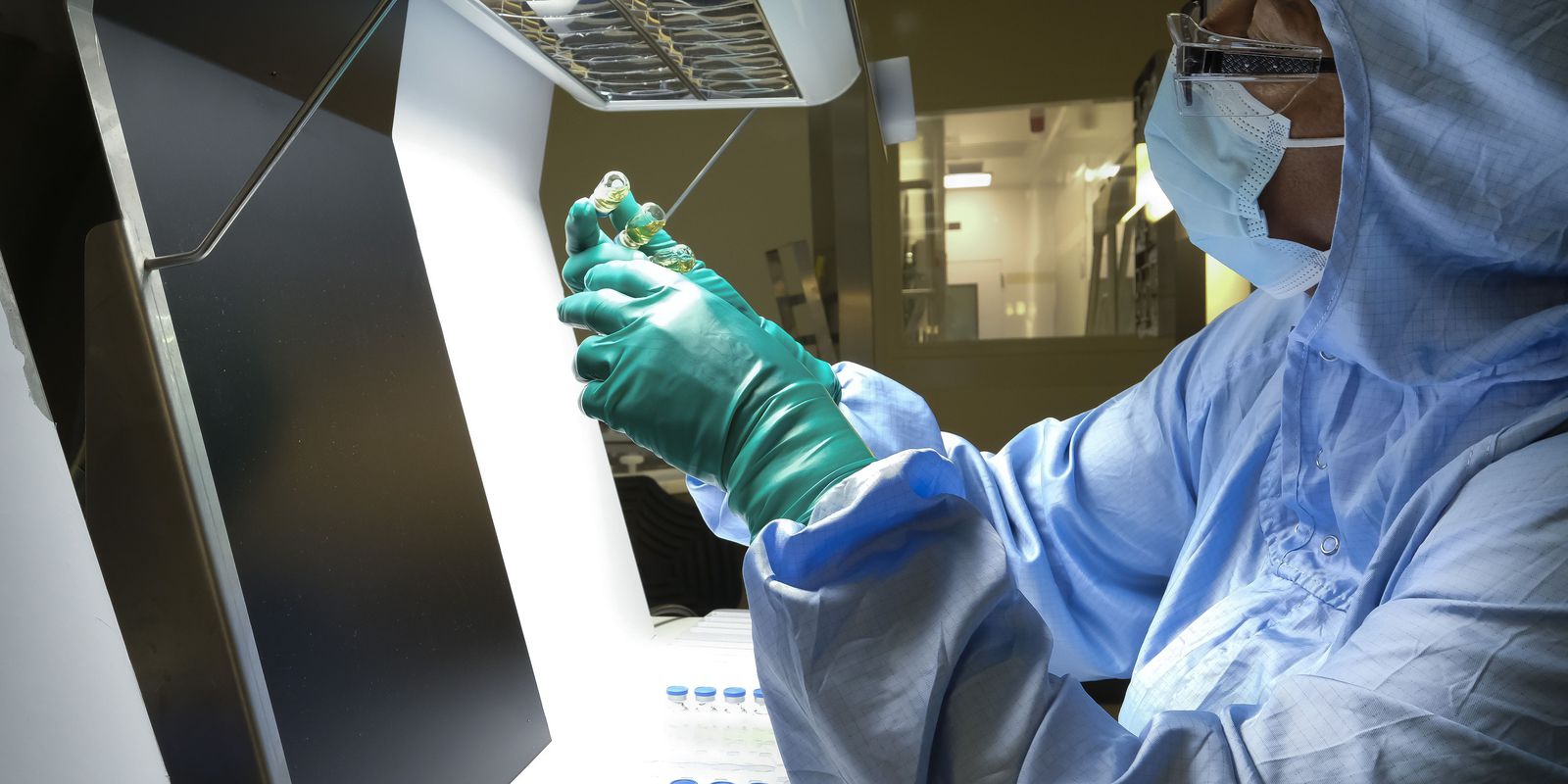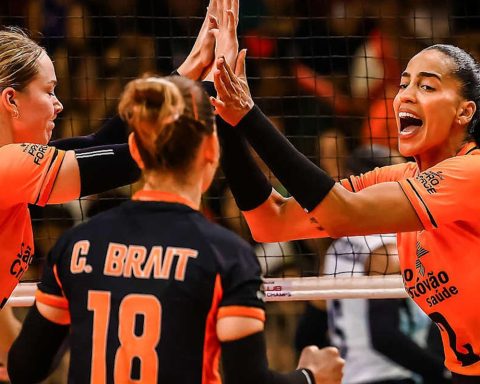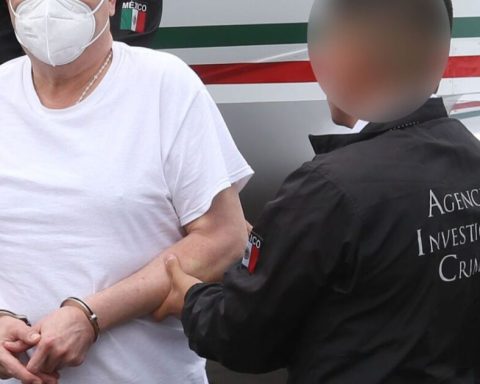Making a vaccine is a process with a series of steps that can take up to 36 months to complete, all of this before the vial with the immunizer leaves the factory and goes to the vaccination stations. In this three-year journey, more than two years can be spent on rigorous quality control processes, which consume 70% of the time dedicated to vaccine production.
Global Head of Medical Affairs for Adult Immunization at GlaxoSmithKline Pharmaceuticals (GSK), immunologist Yan Sergerie believes that one of the main challenges for the pharmaceutical industry and governments is to communicate all this safety involved in the research and production of immunizations, to transform vaccines into vaccination .
Each vial of vaccine produced by the pharmaceutical goes through more than 100 quality checks throughout the manufacturing process, and the company’s largest industrial complex, in Wavre, Belgium, is constantly inspected by external bodies, such as the World Health Organization. and the European Medicines Agency. According to GSK, up to 25 external inspections are carried out per year, each lasting up to four weeks, which means that there is always an ongoing inspection and even more than one taking place simultaneously.
Biggest factory in the world
The small town of Wavre, in the interior of Belgium, has just over 30 thousand inhabitants, but the industrial complex built within its limits is capable of delivering more than 400 million doses of vaccines per year, an amount that exceeds the approximately 300 million doses distributed annually by the National Immunization Program in Brazil. This number represents more than half of the 767 million doses produced by GSK last year, and, according to the company, the 550,000 square meter complex in the Belgian city is the vaccine production unit with the largest area in the world, equivalent to 70 fields. of football.
With the challenge of immunizing a global population of 8 billion people, the vaccine industry has impressive numbers and reach. Largest manufacturers in Brazil, Bio-Manguinhos/Fiocruz and Instituto Butantan each produce more than 200 million doses per year. Already the largest producer in the world, the Serum Institute, from India, reached the milestone of 1.5 billion doses manufactured in 2021 with the covid-19 pandemic, which means that 65% of children on the planet receive doses of Serum . GSK, in turn, estimates that its vaccines reach four out of every 10 children in the world, and up to 60% of these immunizers are produced at the Wavre unit.
Outside the factory gates, the Belgian city is a quiet scene with open fields, a narrow river and a historic, Gothic-style church dedicated to St. John the Baptist. Inside, mirrored buildings, robotic production lines and laboratories with strict sanitary protocols concentrate intense traffic of more than 6 thousand employees.
The British company’s main headquarters in Belgium, the industrial complex with 13 manufacturing buildings also has administrative buildings, houses one of the three GSK research and development units and is the headquarters of the group’s vaccines division, which supplies immunizers to 160 countries, including Brazil.
Vice President and Head of Operations at GSK in Belgium, Rudi Rosolen says that vaccines are probably among the most regulated products in the world and highlights that concentrating research and development and operations teams in the same industrial complex facilitates both processes.
“The proximity of research and development to the factory is a competitive advantage”, says Rosolen, who explains that this allows the operations team to learn about the vaccine even in the early stages of development and also keeps the research team close to production when the product moves on to the commercialization phase.
Rosolen points to mRNA vaccines, used en masse for the first time in immunization against covid-19, among the pharmaceutical company’s bets for the future. In addition to collaborating with the development of the CureVac vaccine, which uses this platform against covid-19, the company is building its own research and development unit dedicated to the complete process of this technology. “We assess that the mRNA platform is an important technology for the future of vaccine manufacturing and we are preparing for that”, he says.
From Wavre, Brazilian private clinics import one of the vaccines available against Herpes Zoster, a disease caused by the same chickenpox virus, varicella zoster. The infectious agent remains in the body after patients recover from chickenpox and waits for a situation of low immunity to attack again, which often occurs after the age of 50, causing intense pain and redness in most cases.
In addition to this vaccine, the industrial complex participates in the production of virtually all 20 vaccines in the pharmaceutical company’s portfolio. The exceptions are immunizers that prevent meningitis, manufactured in a French unit of the group. In the case of at least 12 vaccines, the Wavre complex has the structure to carry out the entire production process
The path of vaccines
Immunizers against poliomyelitis and pertussis, for example, have entire buildings in the industrial complex dedicated to the production of antigens that are inactivated for the formulation of vaccines. This process is one of the most time-consuming steps in making a vaccine and can take up to a year.
Once prepared, the active pharmaceutical ingredient is mixed with adjuvants, stabilizers and other substances, depending on the formula of each vaccine, in the formulation process, which also takes place in an exclusive building in the industrial complex.
From there, the vaccines are taken in tanks of up to 575 liters for one of the most important parts of the process, bottling. The unit where the vaccine vials are filled has the strictest health rules in the industrial complex, divided into four levels of safety. Even to enter the less restricted level, the employees of the bottling unit cannot wear makeup, nail polish or any type of jewelry and accessories and must change all their clothes and shoes for sterilized garments, in addition to covering their hair with caps. Not even thick beards escape being covered.
As the level of security increases, more layers of protection are added: a cover over shoes that had already been changed, overalls over sterilized clothes, masks like those that prevent Covid-19, and gloves. In the third level of security, there is no longer any direct contact between the workers’ skin and the ambient air, and, in the most restricted level of all, only machines work monitored by cameras, as people are not allowed to enter during production. .
All this security is not due to any risk to employees, but to ensure an aseptic environment at times when vaccine vials have not yet been sealed. For the unit’s workers, this care makes any thirst or trip to the bathroom a laborious saga of changing layers of clothes and shoes, because not even water can be consumed in the production area. During shifts, there are two breaks for snacks and one for lunch, which means that each unit worker changes clothes at least eight times in a working day. In the case of the few who access the third level of security, the number of exchanges reaches 24.
Once packaged in sealed vials, the vaccines proceed to labeling and packaging, a step that also occupies a specific building in the industrial complex. Before being stored in the boxes in which they will be sent around the world, the vaccines undergo a visual inspection process, which includes not only cameras, but also the evaluation of trained human eyes. On a treadmill, the flasks pass at a speed of 400 per minute in front of a lens capable of finding problems such as impurities, unexpected particles or colors different from those foreseen in the formulation. Visual inspection robots discard problematic bottles and approve those that meet expectations. When the evaluation is inconclusive, a team of professionals has the final word, and they are dedicated to examining visual aspects of each bottle signaled by the machines.
Vaccine packaging, which might seem like the easiest part, still has a series of complexities: each vaccine has its own label, packaging and leaflet that are in line with the regulatory rules and language of the country that will receive it. As GSK’s 20 vaccines reach 160 countries, the possible combinations number in the thousands. Any change in national regulations requires reviewing the production process and even adopting new machines. That’s what happened recently when Japan decided to include QR codes on all vaccine vials and packaging, requiring that an exclusive labeling and packaging line be set up for the country. This entire process still needs to be fully traceable, as each vial must be serialized so that health authorities can identify which batch of vaccine each person received.
adult vaccination
Immunologist Yan Sergerie points out that communicating the importance of vaccines and their beneficial impact on society is among the main tasks to be done by companies and governments to increase vaccine coverage. In the case of the adult population, Sergerie points out that the lack of knowledge of a large part of the population about the importance of vaccines for healthy aging is even greater.
“If you ask if children are vaccinated, parents will say yes. But about them, they say no. There is this belief that infectious diseases are a thing for children, but they are not. People are not aware of the disastrous consequences that infectious diseases can have.”
The immunologist stresses that, over the years, the body’s defenses in adults tend to weaken, which is even more worrying in the case of people with comorbidities and chronic diseases such as diabetes and cardiovascular problems. This vulnerability opens the way for vaccine-preventable infections to have more severe consequences.
“When talking about senescence, 50-year-olds say they’re fine and feel like they’re 40. 70-year-olds say they feel 60. And even 80-year-olds say they feel 70 and fit. You can feel that way, feel good and be fit, but your immune system will weaken over time. In some people, it’s faster, especially with comorbidities.”
The head of Adult Immunizations says he believes that one of the ways to increase vaccination coverage in this population is to bet on the relationship between doctor and patient, as health professionals are still among the main sources considered by people in their health decisions. Another is to combine communication efforts with partners such as governments, especially now that the covid-19 pandemic has the world paying more attention to vaccine manufacturing.
“We certainly have to have more communication about how vaccines are made, but it needs to be done in collaboration with governments and other strategic partners. It’s a matter of showing transparency”, he points out.
Sergerie argues that increasing vaccination coverage among adults and children is a measure that goes beyond disease prevention and has social and economic impacts. In this chain of benefits is the increase in school attendance of children, which raises the educational level, generates more productive and well-educated workers and increases life expectancy, the capacity for innovation and wealth in countries.
*The reporter traveled to Wavre, Belgium, at the invitation of GlaxoSmithKline (GSK)


















